Will scientists ever find a life that has not appeared on the planet?
- Transfer
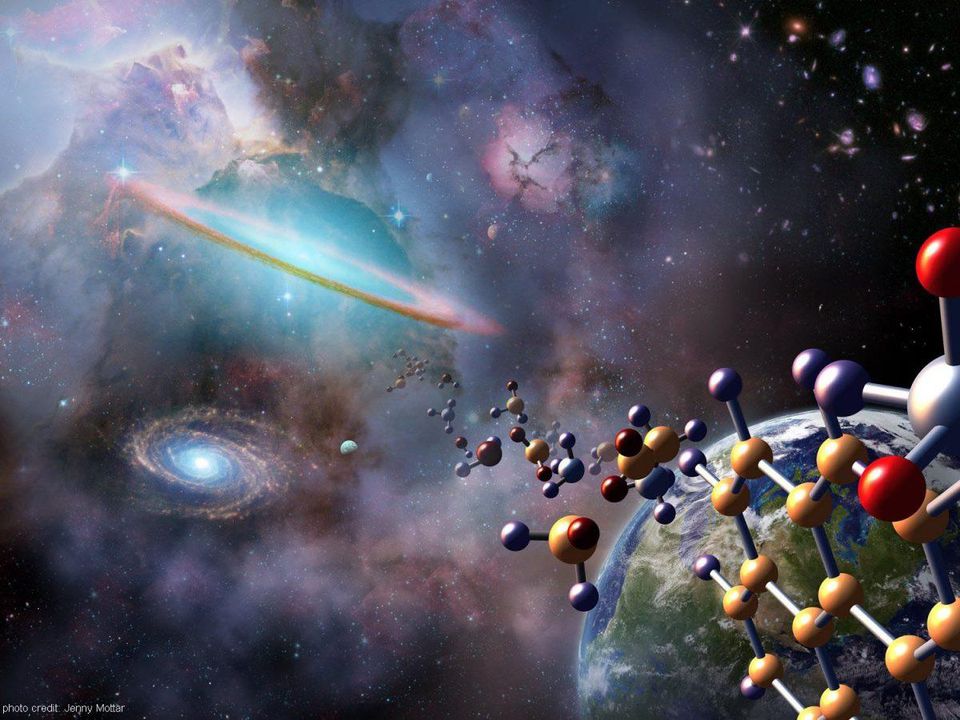
Atoms are able to bind into molecules, including organic ones, both on the planets and in space. Is it possible that life appeared not just before the appearance of the Earth, but also not on the planet at all?
After revealing the properties of other worlds of our solar system, it became clear that the Earth is unique. Only we have liquid water on the surface; only we have a diverse, complex, multicellular life, the evidence of which can be seen from orbit; only we have huge amounts of atmospheric oxygen. Other worlds may have oceans hidden under the surface or evidence of the presence of liquid water in the past, and single-cell life, or evidence of the existence of life in the past. Of course, in other stellar systems, earth-like worlds can exist, with conditions sufficiently similar to those in which life arose here. But an earth-like planet is not necessary for the existence of life; recent evidence suggests that no peace may be needed. It is possible that life exists in the depths of interstellar space.

Signs of the presence of organic molecules that produce life are found throughout space, including the largest star formation region nearest to us: the Orion Nebula.
As far as we know, only a few basic requirements are necessary for life. We need:
- complex molecule or set of molecules
- who are able to encode information
- which will be the key motivator of the body’s activity,
- who will be able to collect and accumulate energy and turn it into work,
- as a result, he will be able to copy himself and transmit the information encoded in it to the next generation.
There are fine lines between life and not life, which we sometimes can’t determine for sure - for example, bacteria are considered life, crystals are not considered, and there is still controversy about viruses .
The formation and growth of a snowflake, a certain configuration of an ice crystal. Although the molecular structure of crystals allows them to reproduce and self-copy, they do not use energy and do not encode genetic information.
But why do you need a planet for life to appear? Of course, the aquatic environment provided by the oceans can serve as a place for the prosperity of life known to us, but we find its primary ingredients throughout the Universe. Stars through planetary nebulae, supernovae, collisions of neutron stars and mass ejections (including other processes) burn hydrogen and helium, synthesizing a whole set of stable elements of the periodic table. After a sufficient number of generations of stars, the universe is filled with these elements. This is a large amount of carbon, nitrogen, oxygen, calcium, phosphorus, potassium, sodium, sulfur, magnesium and chlorine. Together with hydrogen, these elements make up 99.5% of the human body.
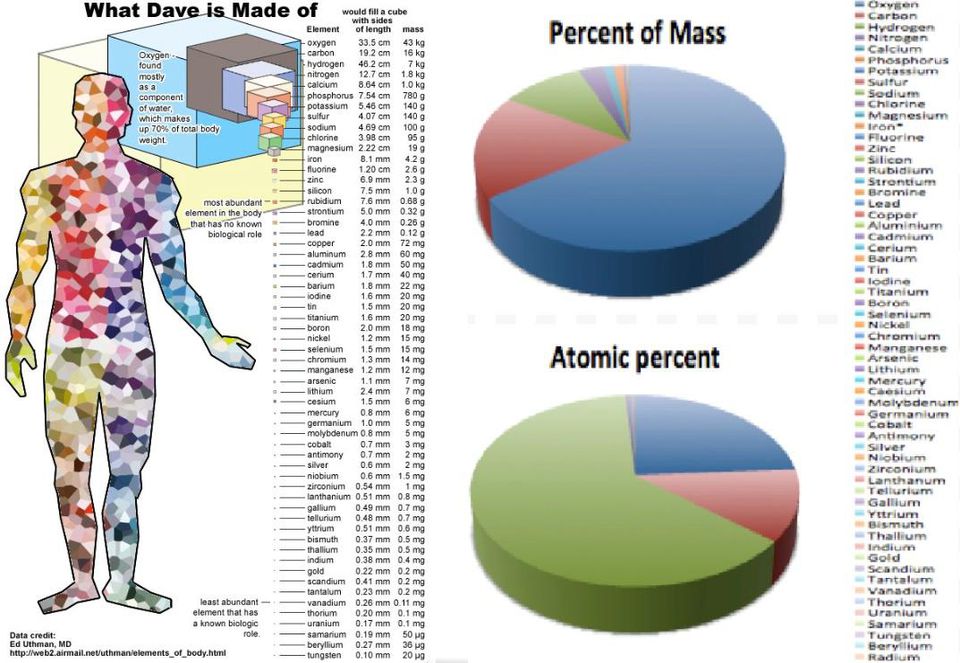
The elements that make up the human body and are the most important for life are found throughout the periodic table, but they can all be created in processes that take place within several types of stars.
To link these elements together into an interesting organic configuration, an energy source is needed. The Earth has the Sun, but there are billions of stars in the Milky Way, as well as many interstellar sources of energy. Neutron stars, white dwarfs, supernova remnants, protoplanets and protostars, nebulae, and much more fill our Milky Way and all the large galaxies. Observing the matter thrown away by young stars, protoplanetary nebulae and gas clouds in interstellar space, we find very different complex molecules. Among them - amino acids, sugars, aromatic compounds(arenas), and even such esoteric things as ethyl formate, imparting [ostensibly / approx. transl.] aroma of raspberries.
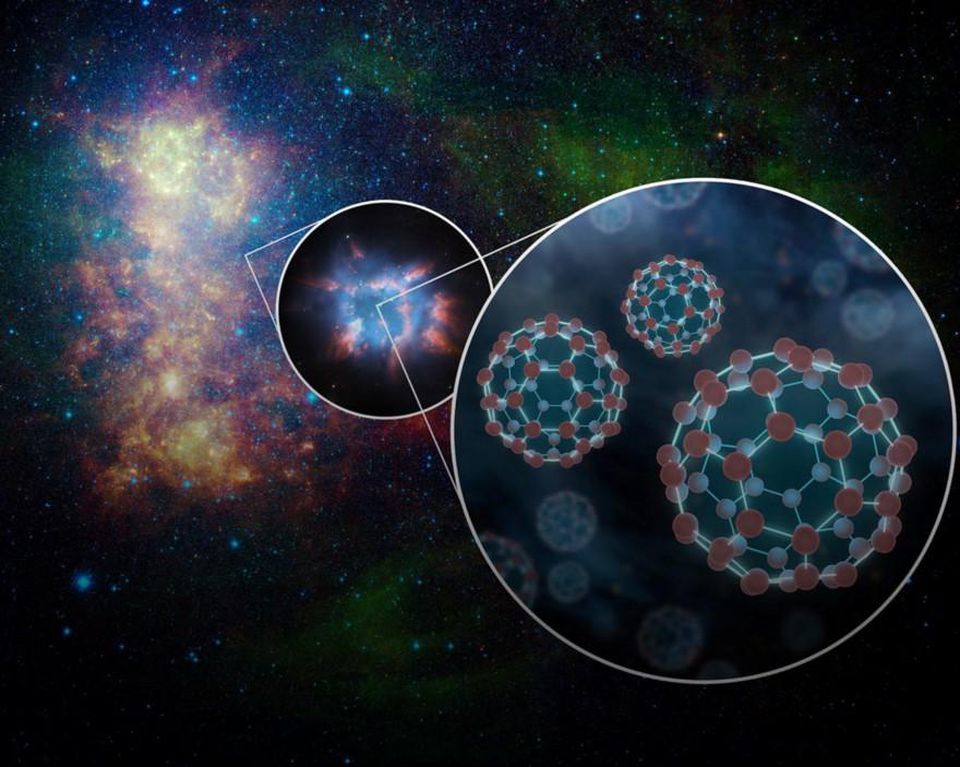
In the interstellar space is full of varieties of organic molecules including buckminsterfullerene, which were found in different places
There is even evidence of presence in space bakminsterfullerenov (or buckyballs - C 60 ), available in the remnants of exploded stars. But if you return to Earth, then here you can find evidence of the presence of these organic materials in highly inorganic places: inside the meteors that fell from space to earth. On Earth, there are 20 different amino acids that play a role in biological processes. In theory, all amino acids that make up proteins have identical structure, with the exception of radicalswhich may consist of different atoms assembled in different configurations. Only these 20 are involved in terrestrial life processes, and almost all molecules have left-sided chirality . But inside the asteroid residues you can find 80 different amino acids, and equally many with right and left chirality.
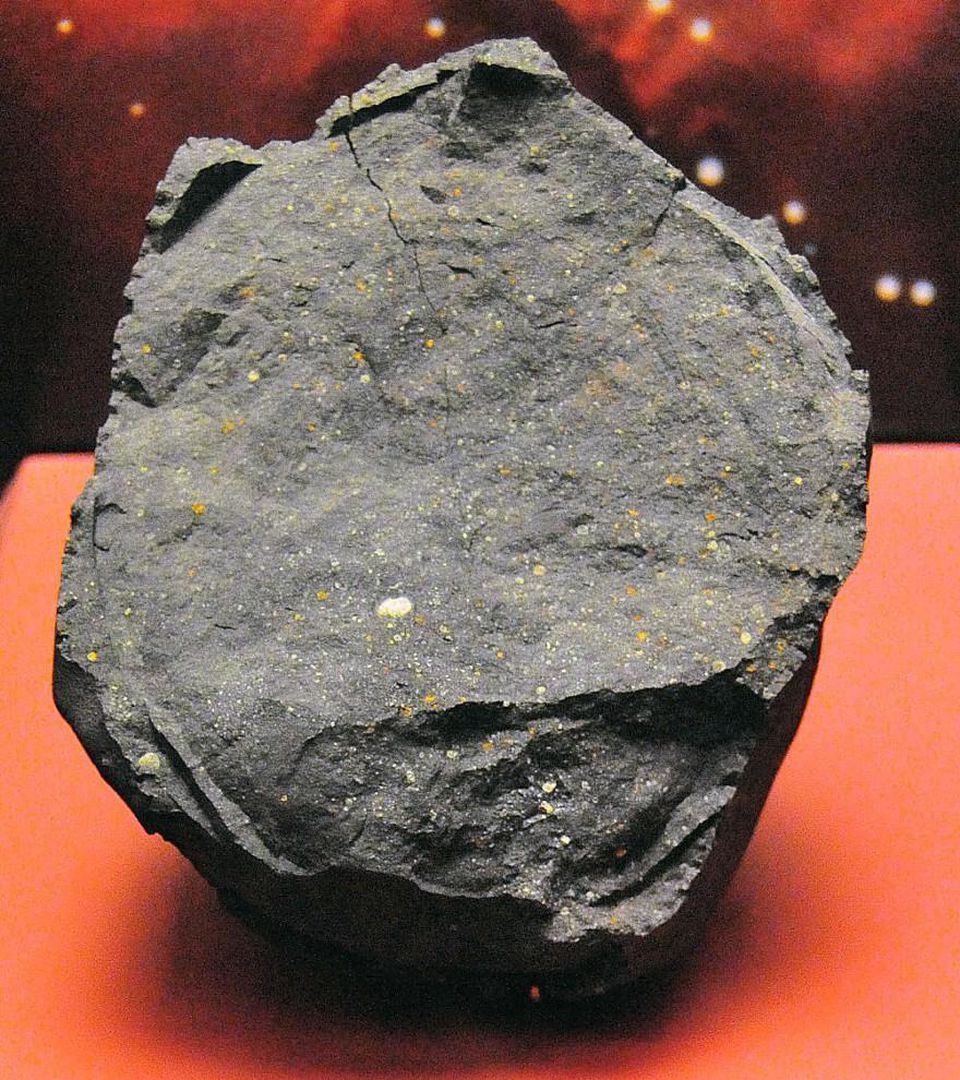
In Murchison meteorite, which fell in Australia in the XX century, many amino acids were found that are not found in nature.
If you look at the simplest forms of life that exist today, and when other, more complex forms of life appeared on Earth, we will notice an interesting pattern: the amount of information encoded in the genome increases with complexity. This makes sense as mutations, copies and redundancy increase the information contained within. But even if you look at the genome without redundancy, we will find not just an increase in information - it increases from time to logarithmically. If we go back in time, we find that:
- Mammals from 0.1 billion years ago have 6 × 10 9 paired bases .
- Fish from 0.5 billion years ago have 10 9 paired bases.
- Worms from 1.0 billion years ago have 8 × 10 8 paired bases.
- Eukaryotes from 2.2 billion years ago have 3 × 10 6 paired bases.
- Prokaryotes, the first form of life since 3.5 billion years ago, have 7 × 10 5 paired bases.
By constructing a dependency graph , we get something remarkable and intriguing:

On this semi-log graph, the complexity of the organisms, measured by the length of functional non-redundant DNA per gene, counted by base pairs, grows linearly with time. Time is counted back, in billions of years, until today (0). [The moment of the appearance of the planet Earth is marked by a vertical bold line (-4.5 billion years) / approx. transl.]
Either life on Earth began with the complexity of about 100,000 paired bases in the first organism, or it began billions of years earlier in a simpler form. This could have happened on a pre-existing world, whose contents moved through space and ended up on Earth in the great panspermia event.that, of course, is possible. But it is also possible that in the depths of interstellar space the energy from stars and cataclysms occurring in the galaxy provided an environment suitable for assembling molecules. It did not have to be life in the form of a cell; but a molecule capable of collecting energy from the environment, performing a certain function and reproducing itself, encoding the information necessary for its existence in the reproduced molecule, fits the definition of life.
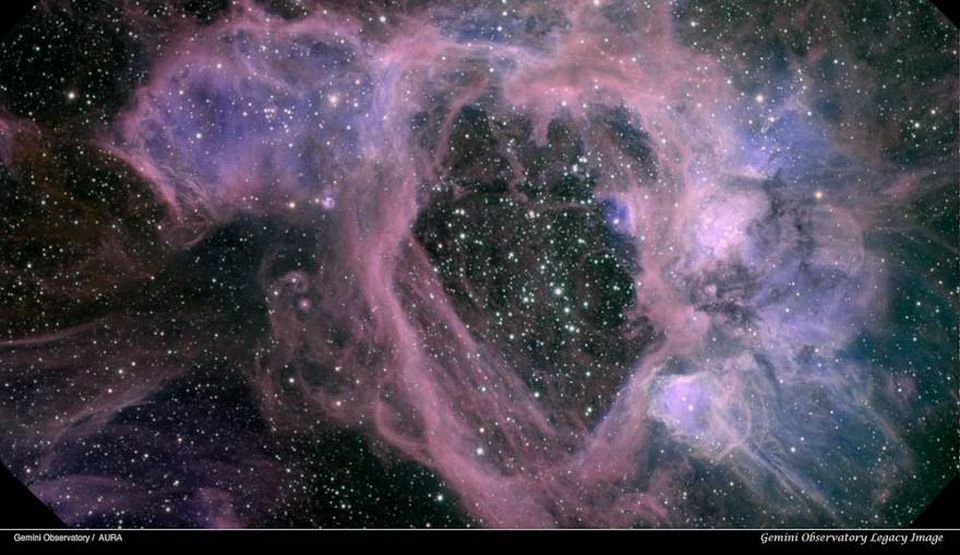
A nebula rich in gas pushed into the interstellar space by hot new stars formed in the central region. The earth could have been formed in the same region, and it could already crawl with the primitive life forms, obeying certain rules and definitions.
So if we want to understand the origin of life on Earth, or life outside the Earth, we may not necessarily have to go to another world. The main secrets that give the key to life may be hiding in the least suitable place for this: in the abyss of interstellar space. If the answer lies there, it can teach us that not only the ingredients of life, but life itself can exist in space. Perhaps we only need to learn how and where to look for it.

The presence of glycolaldehydes - simple sugars - in the cloud of interstellar gas
One thing is clear for sure. If there is life in the interstellar space, then practically on any world forming in the Universe, by the time it appears, life will be brought. If there is any protection from the death radiation of the parent star and the source of energy, as well as environment friendly to the development of life, then the evolution, as a result of which something complex appears, may be inevitable. Someday, scientists can not only discover life that has not appeared on the planet - but also that the life of our world owes its origin to the depths of interstellar space.
